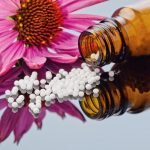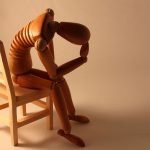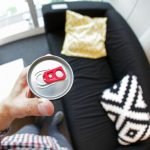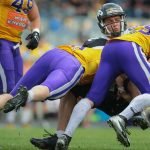Injection Therapies for Pain
Jeff Harris, ND
All of us will experience pain of some type in our lives. As long as we have a human body, pain is a possibility. Throughout human history we has searched for remedies and have been successful. I’m going to tell you of 3 therapies that I have found successful in treating pain. But, first, a couple of stories.
Dr Bastyr would tell a story about the “Black Box” and how R.G. Carroll would get these great results with it, adding that he, Dr Bastyr, had tried the “Black Box” and it didn’t work for him. I wasn’t sure why he had told me this story but it always stuck with me. When he told the story I could feel that it was important to him. So, I took it to heart. A couple years after that, Dr Bastyr died, and as people were going through his office, they found many different machines and therapy devices. There was such a vast array, and no one had seen him use them. Now, I had my own interpretation of his story, which is that as naturopathic doctors we have the responsibility to find how the “Vis” flows through us for healing. We also need to allow other naturopathic doctors to find how the Vis flows through them. We are a broad-allowing profession that is inclusive, not exclusive or dogmatic. We are inclusive of science and nature and willing to test things out and find what works for us. If we catch ourselves criticizing the methods of other naturopathic doctors, then we would be wrong in the eyes of one of our founders. As an educator in the naturopathic world, I feel it is my responsibility to uphold the broadness of discovery for my students.
This story leads me to Bill Turska, NMD. I would say he was my first real mentor. He came and talked to my first-year class at Bastyr University in 1988. He spoke to our class of “healing through the ethers,” but we knew he did ozone therapy, needle surgery, nasal specifics, and IV therapy, to name a few. Some of my classmates preceptored with him and got a view into his style of healing. He even built ozone machines for medical purposes. He had a master intuition and could read his patients in a happy, joyful way. I was surprised by all the injections that he did with his patients, as I was concerned that this wasn’t naturopathic. He told me this is how the ethers flow through me, and my results show that it’s true.
After I graduated, I got the opportunity to work more closely with Dr Turska. I spent 3 days a week with him doing all of his therapies on his patients, in Mist, Oregon, and 3 days a week in my practice in Seattle. He trained me to do all the ozone injections, and had me run his IV room. He would always come and do the needle surgery for the hernia repair, and tell me about the solutions, and show me what he was doing. There are a few others that got to spend time with him, and it was awesome for each one of us.
Neural Therapy
Neural therapy is the injection of local anesthetics, usually procaine, to treat interference in the autonomic nervous system (ANS).
As stated in The Manual of Neural Therapy According to Huneke,1
An interference field or focus produces a change in the cell environment and hence in the reactive capacity of individual organs and of the organism as a whole. Where there is hereditary or acquired organic predisposition, this can result in illness due to an interference field or focus… The interference can set off illness or pain in any part of the body distant to the interference and within its own local segmental area. From a diagnostic point of view the treatment of an interference field can cause a dramatic change and bring about immediate relief of disease without the use of more costly and time consuming investigations.
(Dosch, 2007)1
Interference fields are created in the body from trauma, infection, and surgery, and can develop from emotional traumas as well. The exact mechanism of action isn’t known, but the phenomenon has been proven in practice.
One night when I drove down to Dr Turska’s and went to my bed in the trailer, I heard a squeak from a woman when I dropped my bag in the room. Turns out she was a patient from Seattle who was there to see us the next morning. She was an author of health books and we became instant friends. She invited me to her doctor’s appointment in Seattle, which was with Dietrich Klinghardt, MD, PhD. At the appointment, he was doing neural therapy, treating the interferences in her ANS. It made sense to me right away. I felt like the Vis was speaking to me and offering something that I should try. I wanted to see if it would work for me, like Dr Bastyr had suggested we discover.
I took my first workshop in neural therapy and saw my first patient the following Monday morning. He had had abdominal pain and diarrhea for 2 weeks, so severe that he was losing 15 pounds per week and now weighed less than 100 pounds (height was about 5’ 6”). He was very thin and scared and HIV-positive. He had tried all allopathic treatments, and nothing had changed the pain or the diarrhea. I did the style of testing taught in the course and could not find a problem anywhere in his gut – no infection, no parasites, no reason at all for his condition to be coming from his gut, or from any traumas or scars. Finally, I checked his teeth, and there was one tooth that showed interference, and it had pink gutta-percha in it. I asked him about the tooth. He said he got the beginning of a root canal there 3 days before the diarrhea started, and hadn’t had it completed because of the pain and diarrhea.
Finding an area that is traumatized just before the occurrence of symptoms is a clear signal for neural therapy. I explained the injection procedure to him, and he agreed to try it. When the procaine entered the gum next to his tooth, in the buccal pouch, he screamed out and said the pain in his gut was gone. Both he and I were amazed that it had worked so instantly and that it had worked better than all other therapies that had been tried on him. Naturopathic doctors need to find the modalities that work for them. When they do, the Vis flows through them. Because the Vis flowed through me using neural therapy, I felt a responsibility to the Vis to develop my injection skills, to learn all I could to do it expertly.
This experience was confirmation of Dr Bastyr’s “Black Box” story. At first, I didn’t care much how it worked, as it worked so well and intuitively made sense to me. But, it really is important to try to explain how it worked, to both my patients and other colleagues.
Neural Therapy Theories
Lightening Reaction
This is when an injection of local anesthetic is injected into an area of ANS interference, either distant from the pain or locally, the pain is relieved instantly… like the story just told. This is also called the “Huneke Phenomenon,” named after the discoverers of the reaction and inventors of neural therapy, Ferdinand and Walter Huneke; both were medical doctors in Germany.
Fascial Continuity Theory
This is a phenomenon that can happen when doing a treatment for fascial restriction, related to an indurated scar or other trauma. The fluid of the injection releases the fascia, while the procaine changes the electrical input from the area. This can have an effect in the body either locally or at a distance from the injected area. Often, range of motion improves in affected areas. This was actually the first neural therapy injection, which was done on a painful osteomyelitis scar on the left shin of a patient, and which cured a frozen right shoulder.
Ground System Theory
This involves the understanding of the matrix, which is the fluid-filled space between all cells. This space is continuous throughout the body, and it contains charged particles (proteins, electrolytes, etc) that can enhance the fluidity of the matrix or decrease it. If the matrix is not allowing nutrients and oxygen to flow through to the cells, and the cellular waste materials to leave, then this is picked up by the ANS, which regulates the space. This signal can become conscious, usually first as an itch, but which can then escalate to pain, either quickly or over time, depending on the severity of the issue. The sensation is registered by and interrupts the brain, and we seek treatment if it triggers our internal need for treatment. This is essentially an interference field. Traumas, scars, infections, or emotional issues can cause the interference, which can cause the matrix to change its polarity in that area, which then affects the rest of the body. This is seen commonly in fibromyalgia and other chronic pain conditions that affect the whole body.2
Blastoderm Theory
This takes into account the cell layers in our embryological development. We have 3 layers at this stage: endoderm, mesoderm, and ectoderm. The endoderm becomes our organs, the mesoderm becomes our muscles, and the ectoderm becomes our brain and skin. The ANS grows through the endoderm and mesoderm to connect the brain with the skin, so we have continuity. So, by treating the skin, we produce an effect on the organs and muscles that are just below the skin and all the way back to the brain. The local effect is much like hydrotherapy or massage, but the effects of the procaine produce longer-lasting results and the possibility of clearing the interference field. This phenomenon is also used to direct medicine uptake. By increasing the circulation in a given area, the medications that the patient takes has a better chance of getting to the affected area or concentrating in the area. We call that medicine “uptake enhancement.”
Usually, we figure out what theory or combination of theories gives us the best explanation after a successful treatment. It is rare to know prior to treatment which theory will be the most effective one.
Neural therapy is very effective for pain and pain syndromes. By treating the ANS, we can have a profound effect on the whole body.
Ozone Therapy
Ozone therapy has been used to treat pain, infection, and other conditions, and very successfully. As naturopathic doctors, it is part of our scope, as I read it, because we are allowed to use light, water, and air as part of our therapies, and ozone can be measured in the air. Also, ozone therapy is found in Benedict Lust’s 1918 book, Universal Naturopathic Encyclopedia, Directory and Buyers’ Guide.3
While breathing in ozone in higher concentrations can be damaging and fibrose the lungs, drinking or bathing in ozonated water, rectal insufflation, bagging (putting a person in a bag with a face hole and filling it with ozone), and injecting in different ways are all valid ways to treat pain, infection, and illness. The theory I’ve most liked, as to how it works, is that the nerves send a pain signal during oxygen saturation. Ie, if you cut off circulation to an area, the oxygen levels in the tissue decrease and at some point will start screaming for oxygen, which is sent as a pain signal. Try holding your breath. It doesn’t take long before you experience a sensation that tells you to breathe.
We have many names for injectable ozone therapies. Frank Schallenberger, MD, and Dennis Harper, DC, ND, are 2 of the main champions and sources for learning ozone injection therapies. Both use the injection of nutrients into the affected area, followed by ozone. The injected ozone increases the blood supply and flow of healing nutrients into the damaged tissues. It also stimulates fibroblasts that are involved in synthesizing collagen and cartilage that the body uses to repair damaged ligaments and joints. The regeneration of tissue helps to strengthen and tighten injured tissue, stabilizing the area and removing the cause of pain. This has been effective for acute and chronic pain, and also cleans up infections in the local area. There are different vitamin or premixtures that are used to increase the effectiveness and decrease the after-pain from ozone injections, which can last from 1-2 days. Ozone induces an inflammatory response. The premixtures make for much less after-pain, compared to the German style of injecting only direct gas into the area.
Ozone injections are used in sports medicine and in general pain medicine for back and neck pain, with or without degenerative disc disease. Shoulder pain from rotator cuff injuries, and osteoarthritis of the hips, knees, and spine, are among the commonly treated painful areas. Essentially all pain has a chance of getting better with this treatment.
Neural Prolotherapy
Neuropathic pain and neurogenic inflammation represent the current frontier for developing drugs and treatments to address pain. Actually, muscles, joints, and other body parts don’t send the pain signal to one’s awareness except through the nerves. It has been found that 80% of all pain is neuropathic, ie, caused by the nerves themselves.* The most common nerves that send the pain signal are the cutaneous nerves – the ones most of us have forgotten about since our first-year anatomy class. As it turns out, they carry C-fibers that can be damaged by a pressure of only 30 mm Hg. That can be enough pressure to cause pain over a period of time. When you think of a blood-pressure cuff pumping up, that’s not very much pressure.
The key the pharmaceutical industry is looking for is the ability to regulate a receptor in the C-fibers, called TRPV1 (transient receptor potential cation channel, subfamily V [vanilloid], member 1). TRPV1 was previously named the capsaicin receptor. As naturopathic doctors, we are familiar with the effects of capsaicin for pain, usually by application on the surface of the skin. TRPV1 is regarded as the central nerve receptor in initiating and maintaining pain-related behavior in animals, and pain experience in humans.4 These receptors are responsible for the burning sensation often described in pain syndromes.5 They are also related to neuropathic itch syndromes.
Neural Prolotherapy (NPT) is an effective treatment for pain. In the treatment of pain, NPT uses D5W injections near the nerves that are sending the pain signal. The result is that the nerves stop sending the pain signal and start to send a healing signal. This profound phenomenon was discovered and is taught by John Lyftogt, MD, of Christchurch, New Zealand.
For a direct experience of the burning pain by a TRPV1 receptor and its treatment using the principles of NPT, eat cayenne pepper till your mouth gets hot and then take a sip of a sugary drink and hold it in your mouth. You will find that the burning sensation is extinguished over a short time because the sugar changes the signal at the TRPV1 receptors in the nerves of your mouth. This is proposed to be the effect that is happening with the injections of dextrose. It has been found that NPT resolves 80% of all pain, as 80% of all pain is neuropathic or from neurogenic inflammation.*
The definition of neuropathic pain, according to Professor Douglas Zochodne, states, “Neuropathic pain is a severe and debilitating pain that can render patients unable to walk, work, sleep or enjoy life… Full and effective regeneration of the peripheral nervous system usually extinguishes this pain.”6 This positive response to D5W injections is also diagnostic for neuropathic pain and neurogenic inflammation, ie, confirmation that the pain is neurogenic in nature.
Closing Comments
One of the most rewarding parts of a physician’s practice is witnessing the transformation of a patient’s condition in a profound healing way, especially to a therapy that you administer. This is especially true when it comes to treating pain, because many therapies often result in only temporary relief, no relief, or cause an addiction to pain medication. These 3 injection therapies fit easily into naturopathic medicine’s principals. I would be happy to show these off to either Dr Bastyr or Dr Turska, as they understand the nature of healing with the Vis.
There are many other therapies that work for pain. I have chosen to write only about these 3, since they are so effective and are available to our profession.
* This was Dr Lyftogt’s finding, through his office-based studies using a “recover-o-gram.”
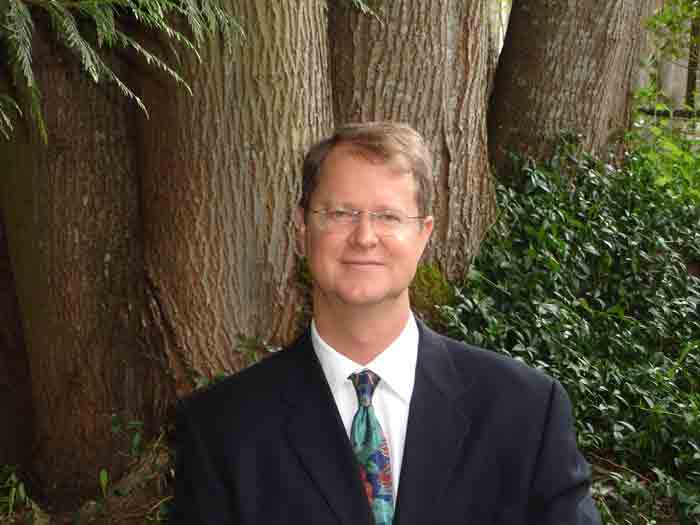 Jeff Harris, ND, graduated from Bastyr University in 1992, and currently practices in the Greenlake area of Seattle, WA. Prior to that, he was a medic in the US Army. He taught medical procedures (injections and IVs) at Bastyr University from 2008 to 2014. He teaches workshops on neural therapy, and hosts NPT workshops for Dr Lyftogt. Dr Harris has practiced neural therapy, neural prolotherapy, and ozone therapy over many years, and has found success with each. He is very interested in keeping our naturopathic injection therapies alive, and is available for teaching, guest lecturing, and mentoring, to foster those that are inspired. Dr Harris’ website is: www.jeffharrisnd.com.
Jeff Harris, ND, graduated from Bastyr University in 1992, and currently practices in the Greenlake area of Seattle, WA. Prior to that, he was a medic in the US Army. He taught medical procedures (injections and IVs) at Bastyr University from 2008 to 2014. He teaches workshops on neural therapy, and hosts NPT workshops for Dr Lyftogt. Dr Harris has practiced neural therapy, neural prolotherapy, and ozone therapy over many years, and has found success with each. He is very interested in keeping our naturopathic injection therapies alive, and is available for teaching, guest lecturing, and mentoring, to foster those that are inspired. Dr Harris’ website is: www.jeffharrisnd.com.
References:
- Dosch P, Dosch M. Manual of Neural Therapy According to Huneke. 2nd New York, NY: Thieme Publishers; 2007.
- Pischinger A. Matrix & Matrix Regulation: Basis for a Holistic Theory in Medicine. Portland, OR: Medicina Biologica; June 1991.
- Lust B, ed. Universal Naturopathic Encyclopedia, Directory and Buyers’ Guide: Year book of Drugless Therapy for 1918-19. Butler, NJ: Benedict Lust Publishing; 1918. Available at: http://www.archive.org/stream/universalnaturop00lust#page/n0/mode/2up.
- Szolcsanyi J. Capsaicin-sensitive sensory nerve terminals with local and systemic efferent functions: facts and scopes of an unorthodox neuroregulatory mechanism. Prog Brain Res. 1996;113:343-359.
- Caterina MJ, Schumacher MA, Tominaga M, et al. The capsaicin receptor: a heat-activated ion channel in the pain pathway. Nature. 1997;389(6653):816-824.
- Zochodne Neurobiology of Peripheral Nerve Regeneration. Cambridge, England: Cambridge University Press; 2008:4.





